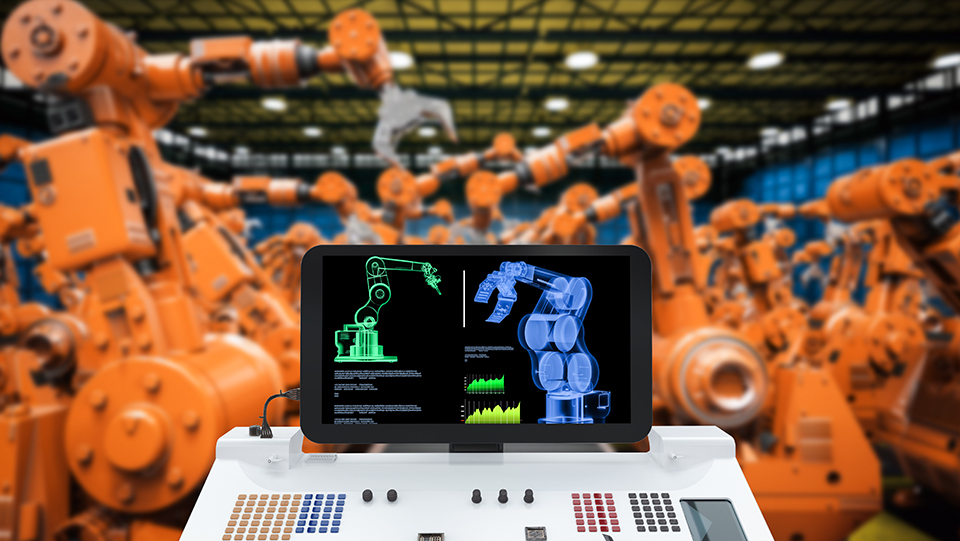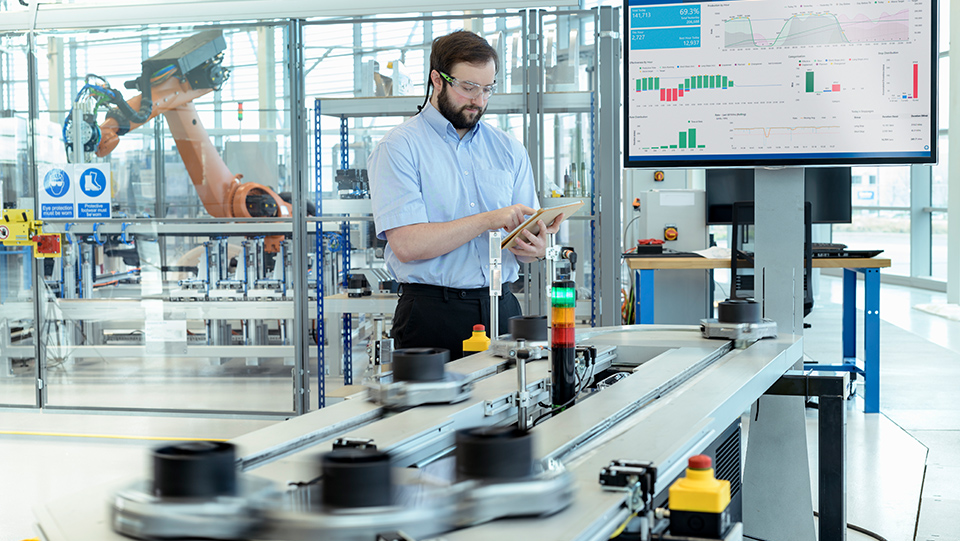Understanding Connected Manufacturing

New technologies can bring both great opportunities and inherent risks. Here’s a look at four elements of the Industrial Internet of Things, and how managing these risks can help manufacturers turn it into a competitive advantage.
(SPEECH)
[MUSIC PLAYING]
(DESCRIPTION)
Red umbrella. Text, Understanding connected manufacturing. An animation of circuits and factory production lines.
(SPEECH)
SPEAKER: From predictive maintenance that can help prevent costly downtime to smart factories that run more agile and efficient automated production lines, connected manufacturing is changing the way business gets done around the world.
(DESCRIPTION)
An animated globe spins. A robotic arm.
(SPEECH)
Technology offers the promise of producing goods at higher quality and lower cost with greater flexibility and control over the production process.
(DESCRIPTION)
An exclamation point.
(SPEECH)
But it's not without risks.
(DESCRIPTION)
A magnifying glass.
(SPEECH)
Here's a look at four elements of the Industrial Internet of Things, and how managing these risks can help manufacturers turn it into a competitive advantage.
(DESCRIPTION)
Computers and smartphones.
(SPEECH)
One, connected devices.
(DESCRIPTION)
An atom shape with numbers flowing through. Spinning gears.
(SPEECH)
At the core of IIoT are the sensors that collect data and the actuators that energize motors and other actions.
(DESCRIPTION)
A skull appears on a computer screen. A broken chain link.
(SPEECH)
But if a connected device malfunctions without automated backups or additional oversight, defects could be introduced, such as dimensional defects or undetected foreign objects on an assembly line.
(DESCRIPTION)
A bottle on an assembly line of boxes. An X through a t-shirt.
(SPEECH)
This could compromise quality and result in large quantities of unacceptable product.
(DESCRIPTION)
Overlapping speech bubbles.
(SPEECH)
Two, communication systems.
(DESCRIPTION)
Routers sending signals.
(SPEECH)
Networks allow devices to communicate with each other, to the cloud, or to mobile devices.
(DESCRIPTION)
Lock symbols connecting computers.
(SPEECH)
Without proper encryption and firewalls, information transfer could be brought to a halt, or proprietary data might be accessed by competitors.
(DESCRIPTION)
A cloud shape filled with ones and zeroes.
(SPEECH)
Three, data storage. Data collected by the connected sensors is stored for real-time and future analysis.
(DESCRIPTION)
A lock symbol in a circuit.
(SPEECH)
If third party vendors storing your data do not manage data security as vigilantly as necessary, your intellectual property could be at risk.
(DESCRIPTION)
A computer screen with a flashing skull.
(SPEECH)
Four, data analytics.
(DESCRIPTION)
A graph.
(SPEECH)
Computer algorithms interpret stored data for actionable insights.
(DESCRIPTION)
A computer with X's on the screen.
(SPEECH)
If algorithms are flawed or data inputs are compromised, an IIoT application intended to control process flow or to place orders for raw materials might cause production delays.
(DESCRIPTION)
A clock's hands spin. A fingerprint, a lock symbol in a cloud and on a sheet. A light bulb.
(SPEECH)
Safety features, data protection measures, effective risk management, and good design decisions can help reduce risks, from protecting your brand and reputation to safeguarding your supply chain. New technologies can bring both great opportunities and inherent risks.
(DESCRIPTION)
A shield symbol. A document symbol with text, insurance, dollar sign.
(SPEECH)
Careful evaluation of available insurance coverages can help protect a company from risks associated with this technology.
(DESCRIPTION)
An exclamation point on a shield symbol.
(SPEECH)
To learn more, visit Travelers.com/Manufacturing.
[MUSIC PLAYING]
(DESCRIPTION)
Copyright 2018 The Travelers Indemnity Company. All rights reserved. Travelers and the Travelers Umbrella logo are registered trademarks of The Travelers Indemnity Company in the U.S. and other countries.



